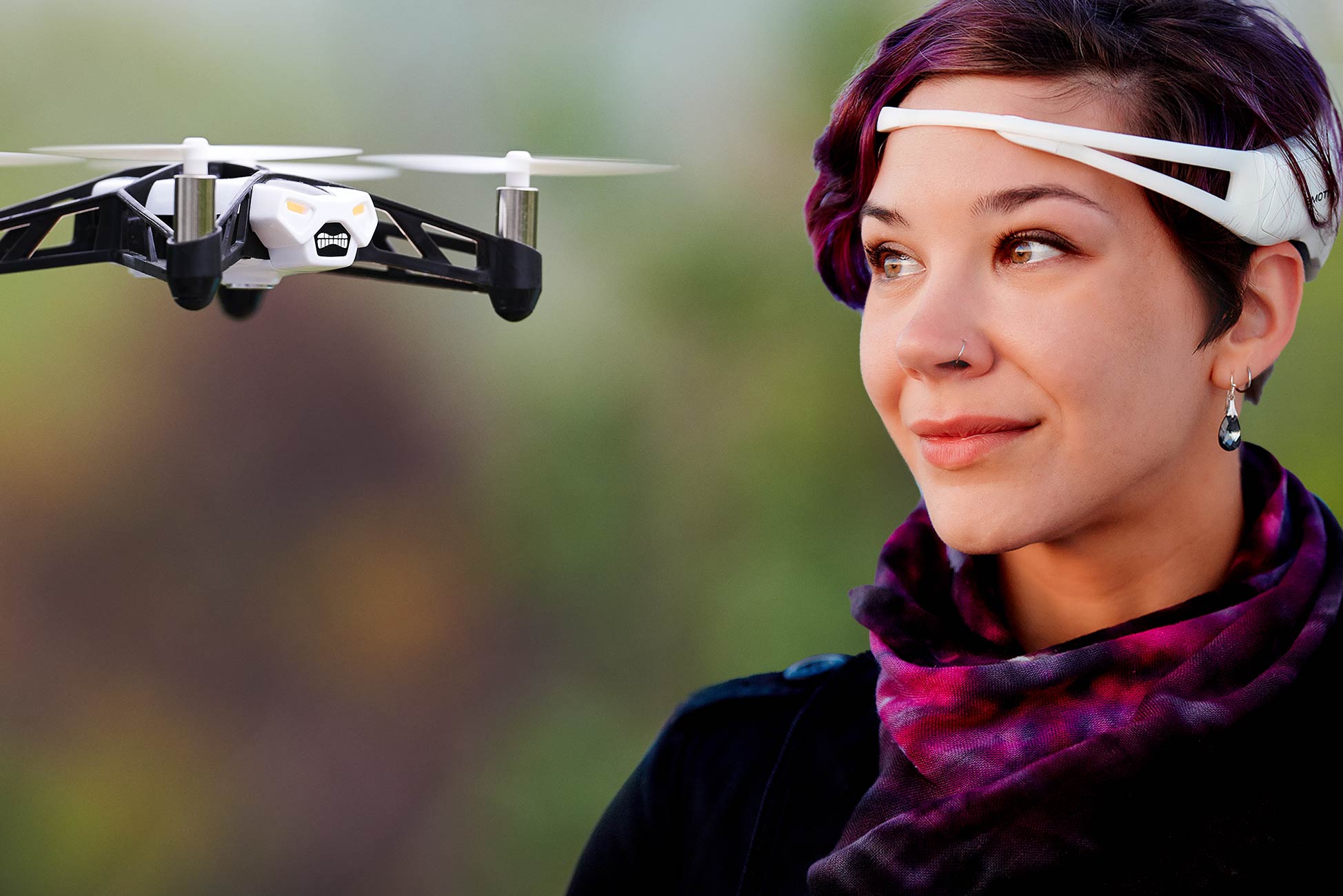The Future is Here – Research Shows Parrot Drone Can be Controlled by Brain
You would be hard pressed to find a person on this planet who is not by now familiar with drones as Unmanned Aerial Systems (UAS) or Unmanned Aerial Vehicles (UAVs). Remote controlled drones using handsets, mobile device apps and FPV goggles are order of the day, and taken as a given. But where to next?
This question may have been answered in recent experimental demonstrations of a Parrot mini drone being controlled by the human brain. The Parrot Rolling Spider is an ultra-compact flying drone with impressive agility. It flies indoor and outdoor with great speed and stability. Its performance capability includes capturing aerial views with the vertical mini-camera, an exclusive free-fall take-off mode: engines start if it is dropped. It performs half- and U-turns in one swipe and can also do front and rear loops in one click. Equipped with propellers that cutout in case of a collision making it very efficient for indoor flights. The Parrot Rolling Spider also comes with a free piloting app compatible with smartphones and tablets running on iOS, Android, and Windows Phone. Its Bluetooth enabled smart technology, makes it compatible across several platforms.
While these capabilities might be common to drones an ongoing research is developing a brain computer interface (BCI) such that it enables a human brain to control all these features of the Parrot mini drone. The human brain is a very complex system – so how is this achieved? The functioning of a BCI involves reading of the subtlest changes in the interpretation of sensory inputs including memory processing and storage; the basic drivers of human moods and emotions that occur in many functional regions distributed around the brain and conveying or translating them into commands that will govern the functioning of the drone. Scientists at EMOTIV have developed a consumer level mobile EEG system that can be applied for this purpose. It is a kind of detection algorithm that can classify and grade the intensity of different conditions of the human brain to interpret them into commands for movement to the drone.
Based on unique and highly efficient methods, the system developed by EMOTIV allows users to train direct mental commands so that the system recognizes thought patterns related to different desired outcomes, such as moving objects or making them disappear. The system can be trained to recognize a single command in less than 20 seconds.





















